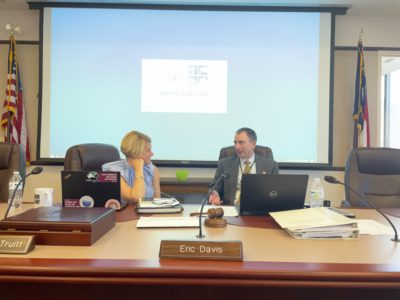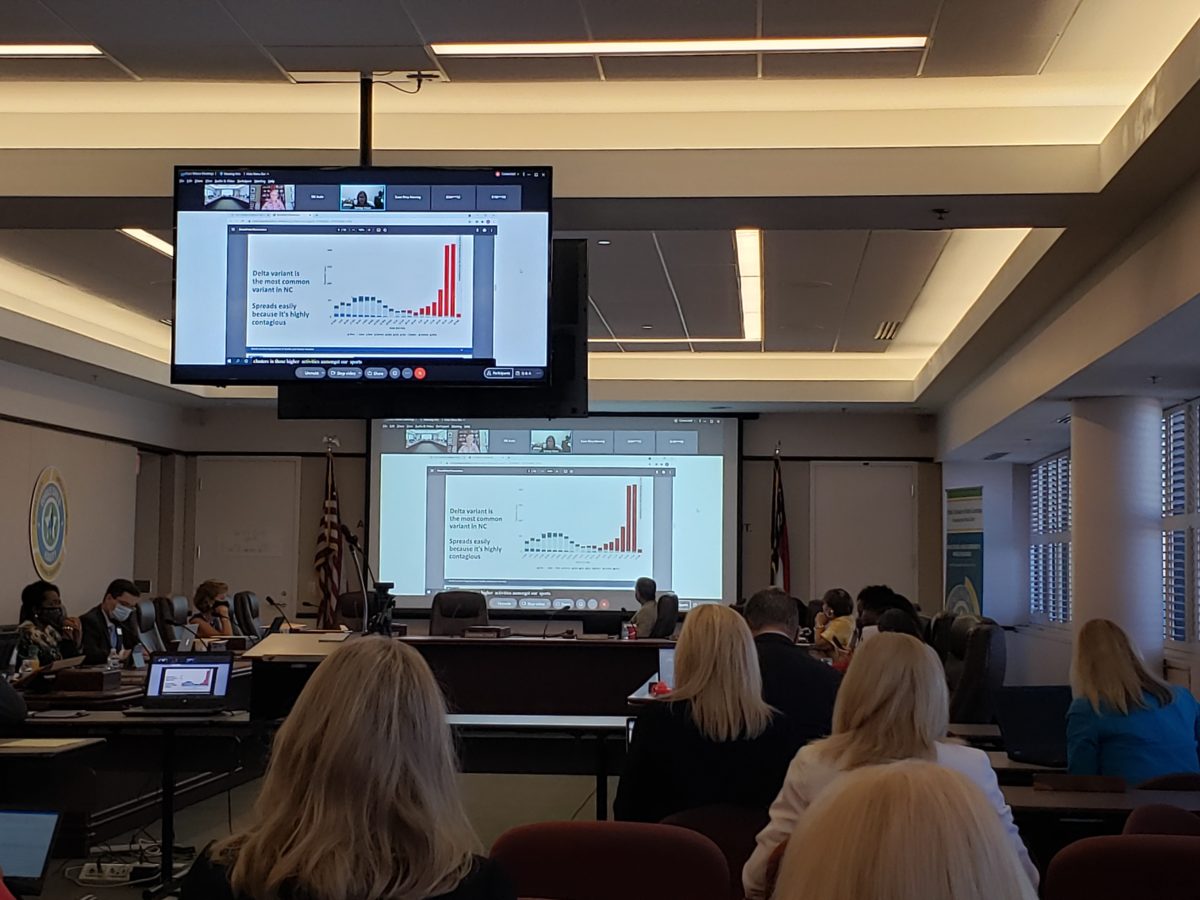
A lot colored the State Board of Education’s first meeting of the school year. On top of it being the third year 0f students learning during a pandemic, a hurricane passed through the state, and two different communities experienced school shootings in just three days.
Chair Eric Davis started Thursday’s meeting with a moment of silence. That somber moment, however, seemed to be a reminder for the Board of their responsibility to North Carolina’s students.
COVID-19 cases are rising in the state, and the N.C. Department of Health and Human Services informed the Board that school-age children are experiencing some of the fastest growth in positive cases. As of Aug. 31, there were 72 active clusters in K-12 classrooms.
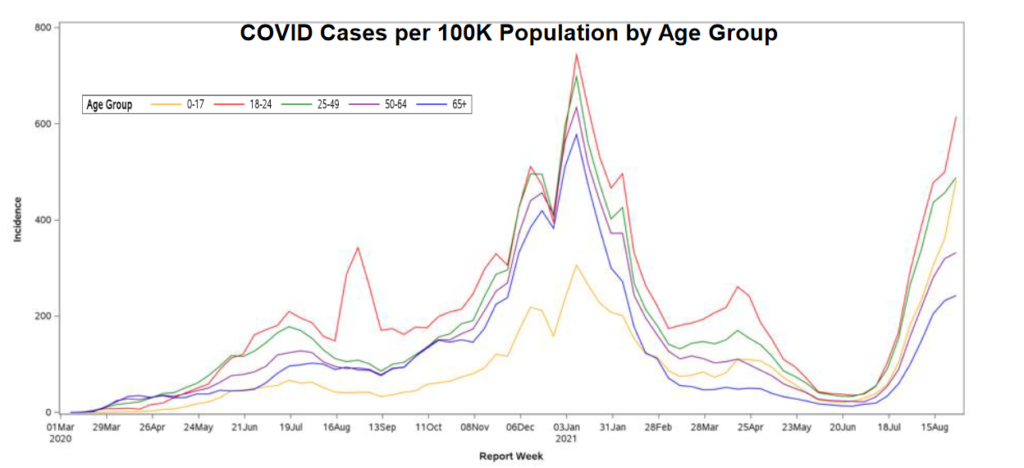
Two weeks into the start of the year, nearly 40% of teenagers have had at least one dose of the vaccine, said State Health Director Betsey Tilson. And at this point, 106 districts are requiring masks. These are two strategies the health department has emphasized will be essential to managing COVID-19 in schools.
On top of pandemic-related challenges, the state still doesn’t have a budget, which means some federal COVID-19 funds are in limbo for the Department of Public Instruction (DPI). It also means the department doesn’t have new funding to work with going into the school year.
The Board discussed all of this as well as new initiatives, test scores for the 2020-21 year, and some stories of success in various districts. Here’s what you need to know.
COVID-19 federal funds update
DPI is trying to push ahead with its plan for the third allotment of the American Rescue Plan’s Elementary and Secondary School Emergency Relief (ESSER III) fund.
Office of Learning Recovery and Acceleration Executive Director Michael Maher gave a comprehensive update to the Board last month on the state’s progress. States are required to submit plans to the U.S. Department of Education, and despite resubmitting its plan on July 16, North Carolina’s still hasn’t been approved — at least not completely.
The state has addressed the questions from the federal education department, but is still waiting for the passage of a state budget before it can fully use these funds.
North Carolina is one of 13 states that has submitted a proposal that has not yet been approved.
But the state does have access to ESSER II funds, and Board this week approved several proposals for how to spend that bucket of federal COVID-19 relief money.
One is for local school nutrition programs. The U.S. Department of Agriculture has waived certain regulations during the pandemic to allow school nutrition staff to continue to meet students’ needs, including allowing deliveries during remote learning.
Over the past 18 months, school nutrition personnel have served more than 210 million meals, according to a DPI press release.
The Board approved $10 million to aid staffing and retention in these services.
“Even when students were not able to physically be in a school building, our school nutrition staff worked around the clock, throughout the pandemic, to ensure our student’s nutritional needs were met,” Board Vice Chair Alan Duncan said. “They worked every day on the front lines, preparing, serving and, in some cases, delivering meals to students.”
“(School) is the only consistency they have when their life is in chaos.”
Board Member Amy White
Another portion of the federal money is going to summer programs. The Board allocated $40 million to create summer bridge programs to provide in-person instructional opportunities to address learning loss. An additional $26 million will fund summer career accelerator programs for students in grades 6-12.
The Board also discussed funding for students experiencing homelessness. North Carolina received almost $6 million in grants to help locate and retain students experiencing homelessness, as well as provide support services.
In the 2018-19 school year, there were almost 35,000 students experiencing homelessness in the state, according to Lisa Phillips, state coordinator for homeless education. Remote learning during the pandemic made serving these students more challenging, she said.
Board member Amy White said the end of the eviction moratorium could cause even more problems for these students and the districts trying to serve them.
“(School) is the only consistency they have when their life is in chaos,” she said.
So far, DPI has received applications amounting to about $4.5 million in grants from districts and other public school units across the state. Another round of funding totaling more than $17 million was awarded on July 26 to fund all interventions and supports for students experiencing homelessness.
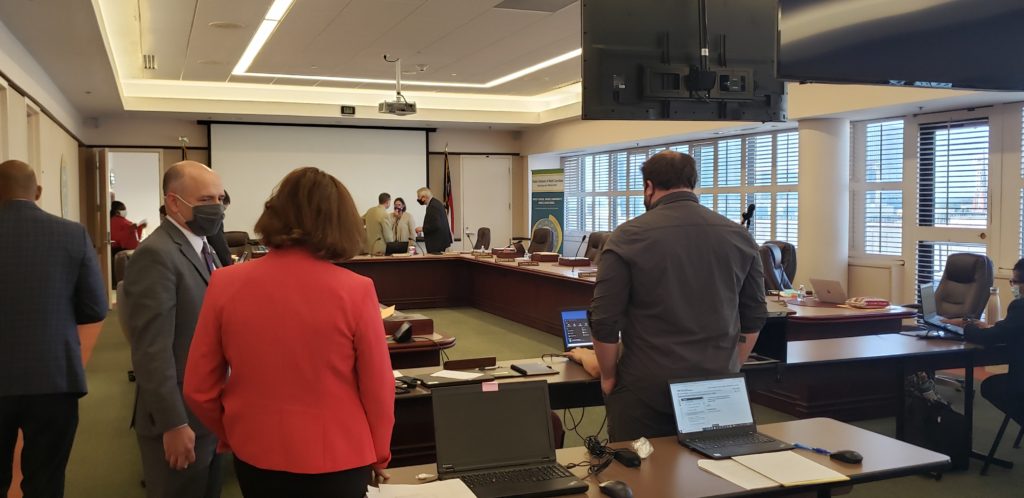
Rowan-Salisbury Renewal School System
Rowan-Salisbury Schools became the state’s first and only renewal school system in 2018. Wednesday’s annual report to the Board was a first for Superintendent Tony Watlington, who was appointed to the job in January.
The renewal model is meant to focus on educating the whole child, while also improving student outcomes and school growth. It gives the school flexibility in certain areas, including having its curriculum design teams be teacher-led, and hiring teachers who may be experienced in their fields but without a license.
The pandemic hit the district just a year after it developed its plans, but Watlington was still optimistic about their trajectory.
The district’s graduation rate has been increasing since the 2016-17 school year, and its dropout rate saw a decline last year. The percentage of schools meeting growth expectations, however, has been declining since that same year, alongside the district’s year-end test proficiency scores.
But Watlington said he doesn’t think the state’s accountability models should be the be-all-end-all for his district. For example, he said he doesn’t think it’s fair that a low-performing designation is 80% based on test scores, particularly for a district like his that is seeing improvement in other areas.
“If Chair Davis comes to kindergarten achieving at this level in reading, and Vice Chair Duncan comes to kindergarten at this level,” he said, holding his hands at different heights, “and they both grow but somehow do not reach the proficiency standard, it is a misnomer that that school did not have a year’s worth of growth or did not do what we expect a school to do.”
Board members congratulated the superintendent and the district on the work they’re doing. Superintendent Catherine Truitt said she and other Board members agree that the state accountability model needs to be changed.
Board member White also thanked Watlington for his transparency.
“You can’t move forward unless you know what the present condition is,” she said.
Updates from North Carolina’s districts
Without a state budget and with few education bills remaining this legislative session, much of the legislative update centered on uplifting positive stories from around the state.
Freebird McKinney, director of government and community affairs for the Board, congratulated the N.C. Virtual Public School for enrolling the largest class in its history for fall 2021. So far, 31,000 students have enrolled, and registration is still open.
DPI staff also recently wrapped up several district visits and Julie Pittman, special adviser for teacher engagement, told the Board about the creative ways some districts are working with their communities.
For example, students in the CTE Construction Technology Program in Yancey County’s Mountain Heritage High School are building affordable housing for teachers.
And in Buncombe County, the district partnered with local organizations to construct what they are calling Essential Educator Housing. The complex includes 24 units with two bedrooms and two bathrooms, where rent is lower than the average market rate in Asheville.
Pittman said this model could be scaled in other places where affordable housing is a challenge.
In response to this news, Chair Davis told Pittman he wants to devote a portion of each month’s meeting to hear about an example of compassion in North Carolina schools.
There’s a lot of good happening in districts across the state, DPI staff and the Board agreed, and hearing these examples can be lessons as well as a cause for celebration.
Rethink Education Grant
DPI has a new initiative to address COVID-19 learning needs in schools. Rethink Education is a statewide effort to improve remote learning in the state’s K-12 schools. The initiative is funded by a grant from the U.S. Department of Education in response to COVID-19.
The program is meant to:
- Prepare all teachers to deliver blended instruction
- Provides high-quality K-8 content
- Provides online resources for parent
- Provides support to 45 districts that are most rural and experience the most economic hardship
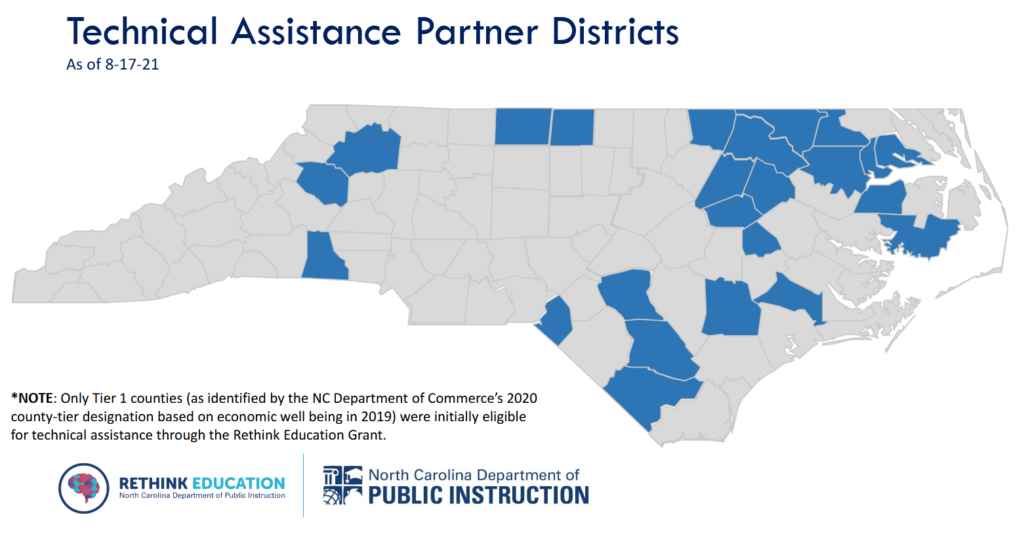
So far, 23 Tier 1 districts have agreed to partner with the program to receive implementation support. Forty-two districts and 25 charter schools have enrolled to be part of the first training cohort.
As for content, the program will provide standards-aligned instructional materials and the content will be developed over the course of the grant period.
Other items
- The most recent school facility needs report was released at the meeting. It found that K-12 schools have up to $12 billion in needs for additions and repairs, up from $8 billion five years ago.
- DPI approved several reports to submit to the legislature, including one on the Career and College Ready Graduates Program and the Professional Educator Preparation and Standards Commission’s annual report. The State Board of Community Colleges approved the CCRG report last month, and both boards noted that the program’s future depends on state funding.
- Three schools earned STEM Schools of Distinction honors this year. They were: Beverly Hills STEM Elementary in Cabarrus County, Oakboro Choice STEM in Stanly County, and Snow Hill Primary in Greene County.
- The Request for Proposal period for the teacher compensation models and the advanced teaching roles program opens on Sept. 15. This year, the Board approved revisions to the rubric that are outlined here.

